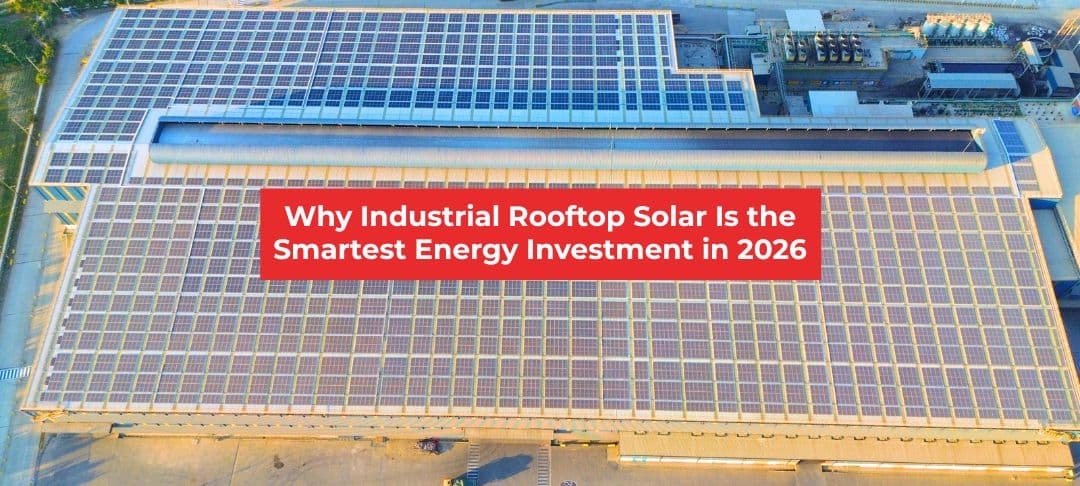How Solar Panels Work: A Simple Guide
Published at - October 26, 2024
In an era where sustainable energy solutions are becoming increasingly vital, solar panels have emerged as a top choice for both homeowners and businesses. But how do these innovative devices transform sunlight into electricity? This guide will simplify the process, exploring the essential components of solar panels, the different types of solar cells, and the influence of sunlight and temperature on energy production.
By grasping these concepts, you can make informed choices about integrating solar technology into your energy strategy, potentially leading to lower utility bills and a more sustainable lifestyle. One key contributor to this industry is Solaric Global , a renewable energy development company with a strong presence in both Singapore and Bangladesh. Specializing in large-scale industrial rooftop solar projects, Solaric combines expertise from Silicon Valley with local knowledge, providing tailored engineering solutions and financial support for factory owners, thus facilitating the transition to solar energy.

1. The Basic Principles of Solar Energy
a. Photovoltaic Effect
The fundamental principle behind solar panels is the photovoltaic effect. When sunlight strikes the surface of a solar cell, it energizes the electrons in the silicon, causing them to move. This movement generates an electric current.
b. Components of a Solar Panel
A typical solar panel consists of several key components:
Solar Cells: The heart of the panel, where the conversion of sunlight to electricity occurs.
Glass Cover: Protects the solar cells from the elements while allowing sunlight to pass through.
Backsheet: The layer that provides insulation and protection on the back of the panel.
Frame: Usually made of aluminum, the frame holds everything together and allows for easy mounting.
Junction Box: This is where the electrical connections are made, directing the generated current to your electrical system.
2. Introduction to Solar Energy: The Basics of Photovoltaics
Solar energy is harnessed through photovoltaic (PV) technology, which converts sunlight directly into electricity. This renewable energy source is not only abundant but also sustainable, making it an attractive option for reducing reliance on fossil fuels.

3. How Solar Panels Generate Electricity
Step 1: Absorbing Sunlight
When sunlight hits the solar panel, the solar cells absorb photons (light particles). The amount of energy absorbed depends on the intensity of the sunlight.
Step 2: Generating Electricity
The absorbed photons transfer their energy to electrons in the silicon atoms. This process excites the electrons, allowing them to break free from their atomic bonds. The movement of these free electrons creates direct current (DC) electricity.
Step 3: Inverter Conversion
Most homes and businesses use alternating current (AC) electricity, so the DC electricity generated by the solar panels must be converted. This is done using a device called an inverter. The inverter transforms the DC electricity into AC electricity, making it usable for your home.
Step 4: Powering Your Home
Once converted to AC electricity, it can be used to power your home’s appliances and lights. Any excess electricity generated can often be sent back to the grid or stored in batteries for later use.
4. Components of a Solar Panel: Breaking It Down
A typical solar panel consists of several key components:
Solar Cells: The heart of the panel, where sunlight is converted into electricity.
Glass Cover: Protects the solar cells from environmental elements while allowing sunlight to pass through.
Backsheet: Provides insulation and protection at the back of the panel.
Frame: Usually made of aluminum, it holds everything together and allows for easy mounting.
Junction Box: Where electrical connections are made, directing the generated current to your electrical system.
5. Types of Solar Cells: Monocrystalline vs. Polycrystalline vs. Thin-Film
There are three main types of solar cells:
Monocrystalline: Made from a single crystal structure, these cells are known for their high efficiency and space-saving design, making them ideal for residential applications.
Polycrystalline: Composed of multiple crystal structures, these cells are generally less efficient than monocrystalline but are often more affordable.
Thin-Film: Made from a variety of materials, thin-film solar cells are lightweight and flexible but usually have lower efficiency compared to crystalline options.

6. How Solar Panels Convert Sunlight into Electricity
When sunlight hits the solar panel, the solar cells absorb photons (light particles). The absorbed energy excites electrons in the silicon, allowing them to break free from their atomic bonds. This movement creates direct current (DC) electricity.
7. How Solar Inverters Transform Energy
Since most homes and businesses use alternating current (AC) electricity, the DC electricity generated by solar panels must be converted. This is done by solar inverters, which transform the DC electricity into AC electricity, making it usable for everyday appliances.
8. The Role of Sunlight: Understanding Solar Irradiance
Solar irradiance refers to the power of solar radiation received per unit area. The amount of sunlight that reaches a solar panel affects its efficiency. Higher solar irradiance means more energy production, making location and panel orientation crucial for maximizing energy capture.
9. How Solar Panels Generate Energy During Different Times of the Day
Solar panels are most effective during peak sunlight hours, typically between 10 AM and 3 PM. However, they can still generate energy outside of these hours, albeit at reduced efficiency. Solar panels can produce energy in cloudy conditions, but less so than during bright, sunny days.
10. The Impact of Temperature on Solar Panel Performance
Interestingly, while solar panels rely on sunlight, they perform best at cooler temperatures. High temperatures can reduce their efficiency. Most manufacturers provide temperature coefficients that indicate how performance decreases with rising temperatures, helping users understand how environmental conditions can affect energy output.

Benefits of Solar Panels
Renewable Energy Source: Solar energy is abundant and sustainable, reducing reliance on fossil fuels.
Lower Electricity Bills: By generating your own electricity, you can significantly reduce your utility bills.
Low Maintenance: Solar panels require minimal maintenance once installed.
Environmental Impact: Using solar energy reduces your carbon footprint, helping to combat climate change.
Conclusion
solar panels harness the power of the sun to provide a clean, renewable source of energy, enabling informed decisions for homeowners and businesses looking to adopt solar technology and reduce electricity costs. A notable player in this field is Solaric Global, a group of renewable energy development companies with its parent company in Singapore and a subsidiary in Bangladesh, specializing in large-scale industrial rooftop solar projects based on both CapEx and OpEx models. Solaric uniquely offers innovative engineering solutions tailored for factory owners. As the only solar company in Bangladesh backed by a private equity investor (OSIRIS), they provide comprehensive financial solutions, making solar panels a powerful choice for those seeking to make a positive impact on the environment.



